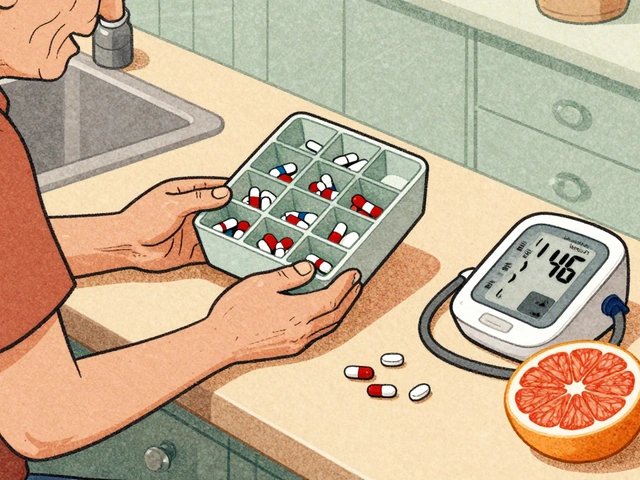Cefdinir — what it treats, how to take it, and buying tips
Cefdinir is an oral third‑generation cephalosporin antibiotic doctors use for common infections: sinusitis, ear infections (otitis media), bronchitis, some skin infections and uncomplicated pneumonia. It works by stopping bacteria from building a cell wall, which helps your immune system clear the infection.
Before taking cefdinir, tell your doctor if you have a penicillin allergy, kidney problems, or are pregnant or breastfeeding. If you’ve had severe allergic reactions to other cephalosporins, mention that too — cross‑reactions can happen.
Typical dosing and practical tips
Adults usually take 300 mg every 12 hours or 600 mg once daily for most infections; treatment length is often 5 to 10 days depending on the infection and doctor’s judgment. For children the common dose is about 7 mg/kg every 12 hours or 14 mg/kg once daily, up to a maximum of 600 mg per day. Always follow the exact dose your prescriber gives you.
If you have reduced kidney function, doctors lower the dose or frequency. Missed a dose? Take it as soon as you remember unless it’s almost time for the next dose — don’t double up.
Side effects, interactions, and safety notes
Most people tolerate cefdinir well. The usual side effects are diarrhea, nausea, headache, and rash. If you notice severe diarrhea, worsening stomach pain, or blood or mucus in stools, contact your doctor — antibiotics can trigger C. difficile infections in some people.
Cefdinir can interact with iron supplements and some antacids. Taking iron at the same time can reduce how much cefdinir your body absorbs and may cause red or brown stool in infants — separate doses by at least 2 to 3 hours. Probenecid can increase cefdinir levels. If you take blood thinners like warfarin, your doctor may monitor your INR because antibiotics sometimes affect bleeding risk.
Store capsules and suspension at room temperature. If you use the powder for oral suspension, shake well and use within 10 days after mixing (check the pharmacy label). Finish the full course unless your prescriber tells you otherwise — stopping early can let bacteria come back stronger.
Looking for cefdinir online? In many countries you still need a valid prescription. Choose pharmacies that show a license, have a real pharmacist contact, and use secure payments. Avoid sites offering prescription drugs without asking for a prescription — they often sell counterfeit or unsafe meds. If unsure, ask your local pharmacist or doctor for recommended online sources.
If you have questions about how cefdinir fits your condition, ask your prescriber. This page gives practical facts, but your doctor will tailor treatment to your health history and test results.











